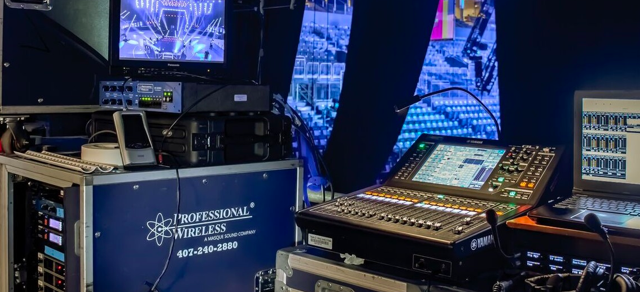Frequency Coordination

In the world of live entertainment, nothing has opened the doors of creativity for performance like the advent of wireless technology. Freedom from the restraints of hardwired cables has not only allowed actors, musicians, and CEOs the benefit of full, unhindered expression but it has also afforded stage technicians, engineers, directors, and producers the ability to communicate while maintaining complete mobility when responding to the demands of today’s complex productions.
Large shows very often require hundreds of radio frequencies to operate all technical aspects. With the inherent interference problems that result when just two uncoordinated frequencies interact, along with competing outside frequencies from TV signals and other nearby productions, the freedom that wireless audio provides is in constant jeopardy. The wireless signal from a performer’s microphone on stage is the first link in the chain from their voice to the venue’s sound system, and when that chain is broken due to drop-outs or interference, the connection with the audience is lost.
PWS exists for the sole purpose of providing drop-out and interference free wireless audio for all sized broadcast, industrial, live entertainment and media events so that the audience is tuned in on being in the moment of the experience and not focused on the distractions caused by inadequate RF coordination. PWS will painstakingly coordinate and continuously monitor all radio frequencies for each piece of wireless audio equipment used on your production with reference to all external frequency sources that threaten to bring down your show. When the success
of your production rides on the invisible, temperamental, and easily compromised wireless audio signals bouncing wildly through the air, you need to rest assured that your frequency coordination is solid, accurate, and constant contact PWS.
Frequency Sweep & Report
A Frequency Sweep and Report consists of an RF Technician appointed by PWS to travel to your venue or location and perform a scan. A scan is usually performed with a handheld spectrum analyzer such as a TTi or Rhode&Schwarz and interpreted by the onsite technician who will determine the outcome of RF equipment and placement for your venue. Once the scan has been completed and all of its data has be utilized the technician will write a report based on the findings of the scan along with his/her recommendations.
A sweep and report is becoming an increasingly fundamental step for new or existing venues that rely on wireless audio; painting a picture of coverage and helping to choose the correct equipment to purchase or rent.
